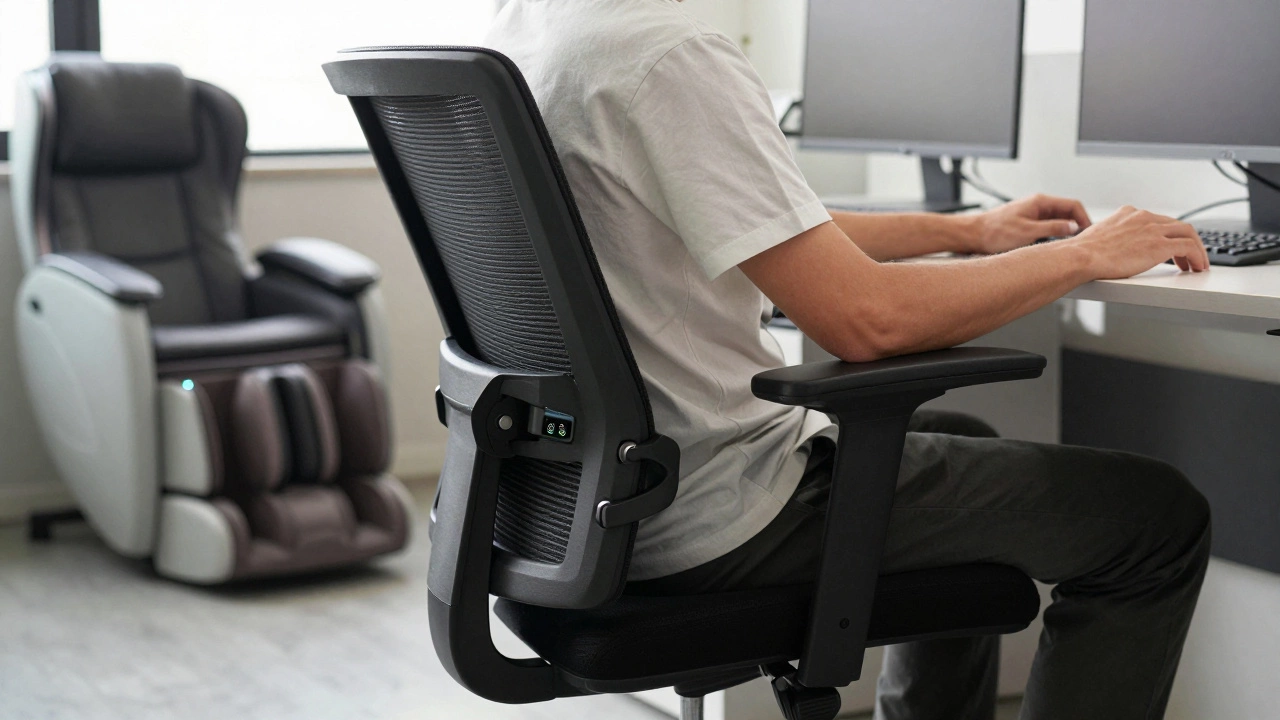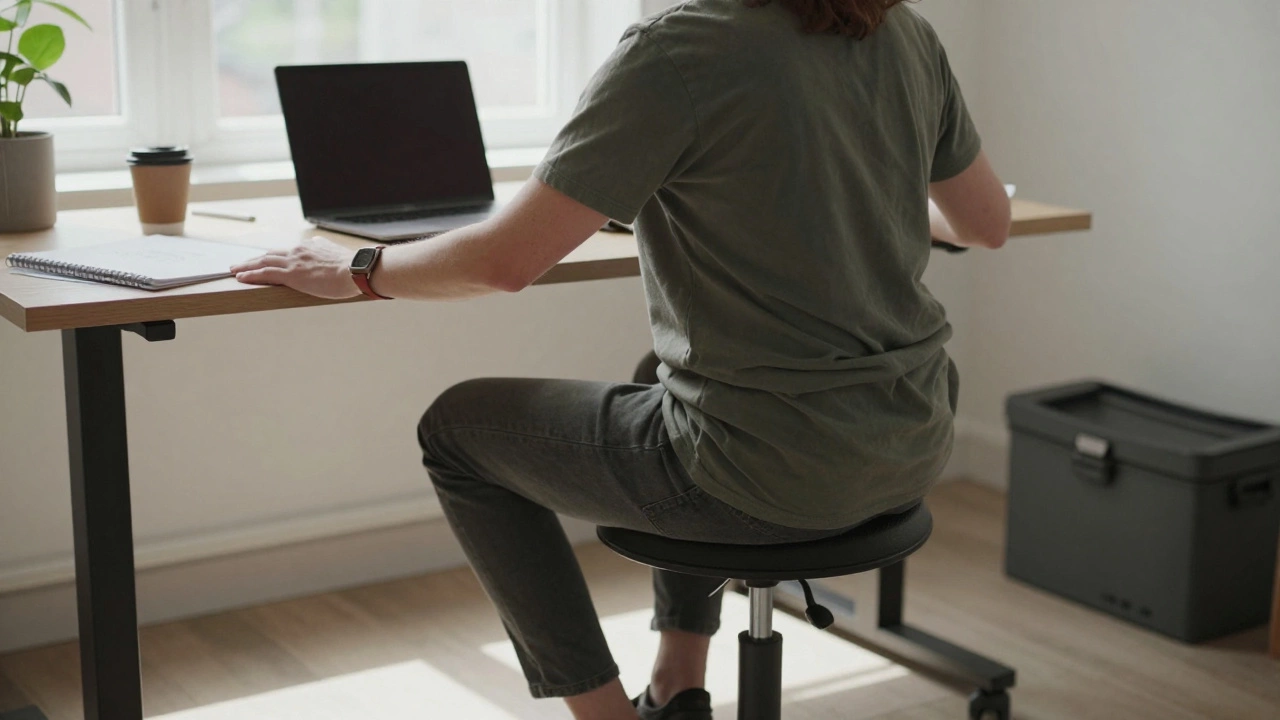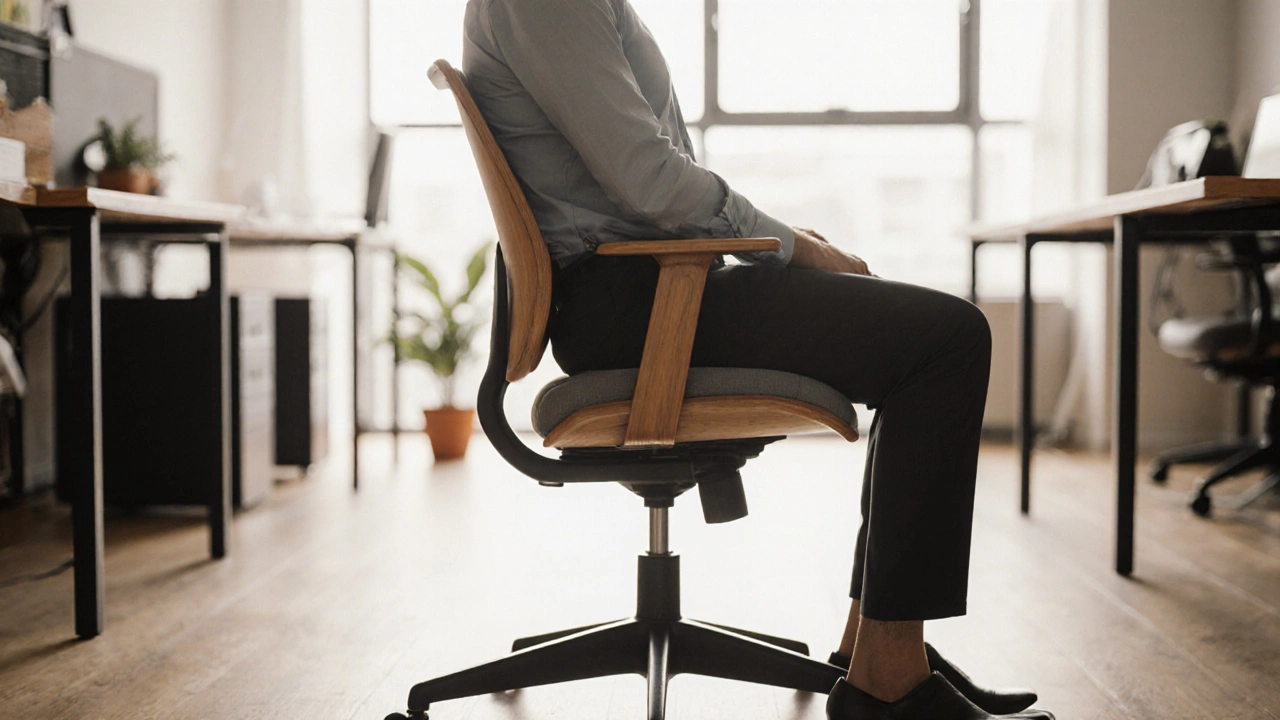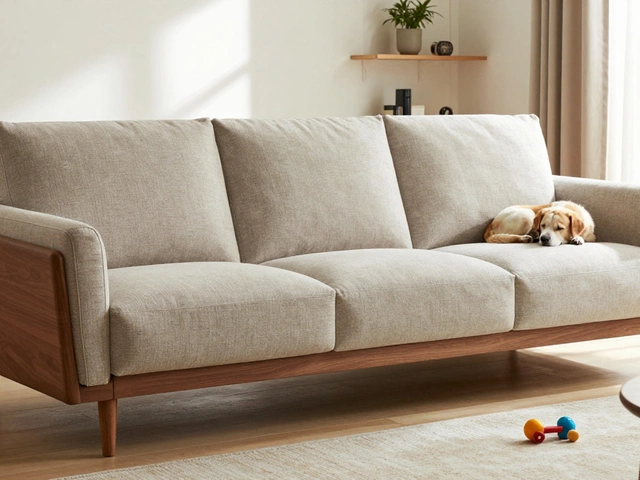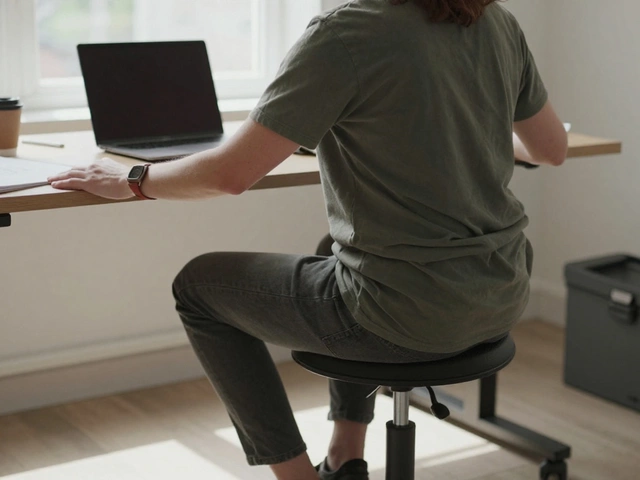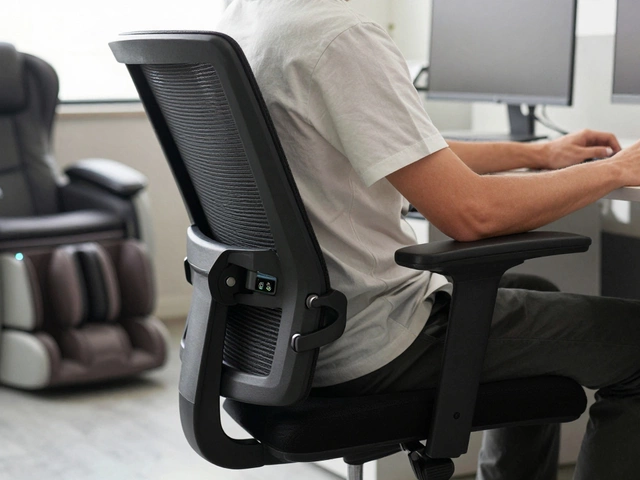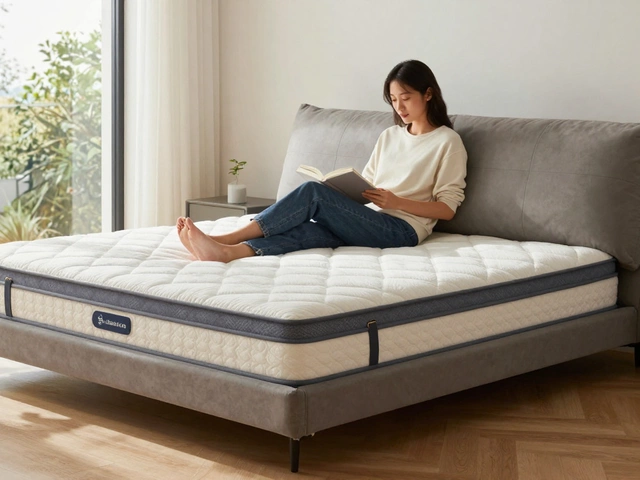Office Chairs: Choose Comfort and Boost Productivity
Spending hours at a desk means your chair can make or break your day. A good office chair keeps your back straight, lowers fatigue, and helps you stay focused. In this guide we break down the most useful tips so you can pick a seat that works for your body and budget.
How to Pick the Right Office Chair
First, think about adjustment. The best chairs let you raise or lower the seat, tilt the backrest, and move armrests. If the height is wrong, you’ll feel strain in your shoulders or hips. A quick test: sit with feet flat on the floor, knees at a 90‑degree angle, and elbows close to your body. If you can’t get that position, the chair isn’t right for you.
Second, look for lumbar support. A curve that fits the natural dip in your lower back prevents slouching. Some chairs have a built‑in pad; others let you add your own cushion. In our article “Best Chair for Sitting Long Hours: Your Back Will Thank You” we show why this feature matters more than fancy fabrics.
Third, consider the material. Mesh backs keep you cool, while leather feels classy but can get hot. If you prefer a wooden look, read “Is a Wooden Office Chair Better?” to weigh durability against comfort.
Price is another big factor. You don’t need a $2,000 throne to get ergonomics, but the cheapest chairs often lack adjustability. Our piece “How Much Should You Spend for a Good Office Chair?” outlines three price bands: under $150, $150‑$400, and $400+. Knowing what you get at each level helps you avoid bad deals.
Common Mistakes and Alternatives
Many people think any chair will do as long as it looks good. That’s a shortcut that leads to back pain. In “Office Chairs That Wreck Your Posture: What to Avoid,” we list red flags like hard seats, no lumbar support, and fixed height. Skipping these warnings can cost you in medical bills later.
If you’re not ready to buy a new chair, explore alternatives. A standing desk, a balance ball, or a kneeling chair can give your spine a break, as explained in “Office Chair Alternatives: What Can You Use Instead?” Just remember that each option has its own learning curve and may not suit long‑hour work.
For people with ADHD or other focus challenges, the right seat matters even more. Our articles “5 Levels of ADHD: How Office Chairs Can Make a Difference” and “Unmasking the Dark Side of ADHD: What You Need to Know About Office Chairs” show how adjustable, supportive chairs can reduce restlessness and improve concentration.
Finally, don’t forget to set the right height for your desk. A chair that’s too high strains your arms and shoulders, a problem covered in “What Happens if Your Office Chair is Too High?”. Adjust the seat until your elbows form a 90‑degree angle when typing.Take these tips, test a few chairs in a store if you can, and trust your body’s signal. A well‑chosen office chair is an investment in health, focus, and comfort – and it doesn’t have to break the bank.
What Is the 80/20 Rule Strategy for Office Chairs?
The 80/20 rule for office chairs means 80% of comfort comes from just 5 key features: lumbar support, seat depth, armrests, height adjustment, and a stable base. Skip the extras and focus on these to save money and protect your back.
Why Do People With ADHD Sit Differently? The Real Reason Behind Fidgeting and Unusual Postures
People with ADHD sit differently because movement helps their brain focus. Traditional chairs make it harder-not easier. Learn why dynamic seating works better and what chairs actually help.
What Is the 20-8-2 Rule for Office Chairs and Better Posture?
The 20-8-2 rule is a simple, science-backed way to prevent back pain and fatigue from sitting too long. Break your day into 20 minutes sitting, 8 minutes standing, and 2 minutes moving to stay healthy at your desk.
Effective Seated Core Workout to Flatten Stomach at the Office
Learn quick seated core exercises you can do at your desk to flatten stomach, boost posture, and burn belly fat without leaving the office.
How Much Should You Spend for a Good Office Chair?
Wondering what the right price is for an office chair that won't wreck your back? This article breaks down what you get at different price ranges—no sugarcoating, just real-world advice. Learn why spending the right amount can save you from aches, help boost focus, and even save money long term. You'll also get tips on what features actually matter and how to spot a good deal. Skip the guesswork and figure out exactly what fits your needs and wallet.
Office Chair Alternatives: What Can You Use Instead?
Tired of your usual office chair? There are plenty of practical and surprisingly comfy options out there that can replace it. This article checks out different alternatives, from standing desks to active seating like balance balls and kneeling chairs. You'll get real tips, pros and cons, and what to look for so your back—and your focus—won't suffer. Find new ways to work that actually fit your body and your daily routine.
5 Levels of ADHD: How Office Chairs Can Make a Difference
Curious about how ADHD shows up at work? This article breaks down the five levels of ADHD and explains how the right office chair can help with focus and comfort. You'll get real tips for choosing a chair that matches your needs no matter what level you're dealing with. Learn what to look for to support better posture and attention, especially during long workdays. Get concrete ideas you can use right away to boost your productivity and feel better at your desk.
How Much Should a Decent Office Chair Cost?
Trying to figure out how much a decent office chair should cost? This article breaks down price ranges, what each bracket actually gets you, and common traps buyers fall into. You'll get real numbers, straight talk, and practical tips so you can shop with confidence. Learn where you should never cut corners and where you could save money without ruining your back. Whether you're setting up a home office or just tired of sitting on something that hurts, we've got you covered.
Best Chair for Sitting Long Hours: Your Back Will Thank You
Choosing the best chair for sitting long hours isn’t about looks—it’s about keeping your body comfortable and your mind focused. This article breaks down the key features that matter when you’re parked at your desk all day. You’ll get straightforward advice on what to look for, from lumbar support to seat cushioning. Expect real tips that go beyond the typical marketing fluff. Plus, there are practical adjustments you can use with any chair to boost comfort right now.
Is a Chair Better Than a Stool for Posture?
When it comes to improving your posture while seated, is the trusty chair better than a stool? This article explores the benefits and drawbacks of both seating options, focusing on comfort and long-term health. Learn about how each affects your body, the potential impacts on posture, and get practical advice for choosing the right seat for your office routine. Whether you’re sitting at a desk all day or just occasionally, understanding the right choice can make a big difference.
Is a Wooden Office Chair Better?
Curious if a wooden office chair is the right choice? This article dives into the benefits and potential drawbacks of choosing wooden seating for your workspace. While wooden chairs offer durability and a timeless look, they might not suit every comfort preference. Explore the importance of ergonomics and find tips to enhance comfort when working long hours. Discover if a wooden office chair aligns with your office needs and style.
Unmasking the Dark Side of ADHD: What You Need to Know About Office Chairs
ADHD can significantly impact workplace comfort and productivity, especially when it comes to something as crucial as choosing the right office chair. This article explores the connection between ADHD and seating preferences, highlighting how discomfort can exacerbate symptoms. It also delves into practical tips for selecting office chairs that cater to those with ADHD. Understand the importance of ergonomics and design for maintaining focus and comfort.
